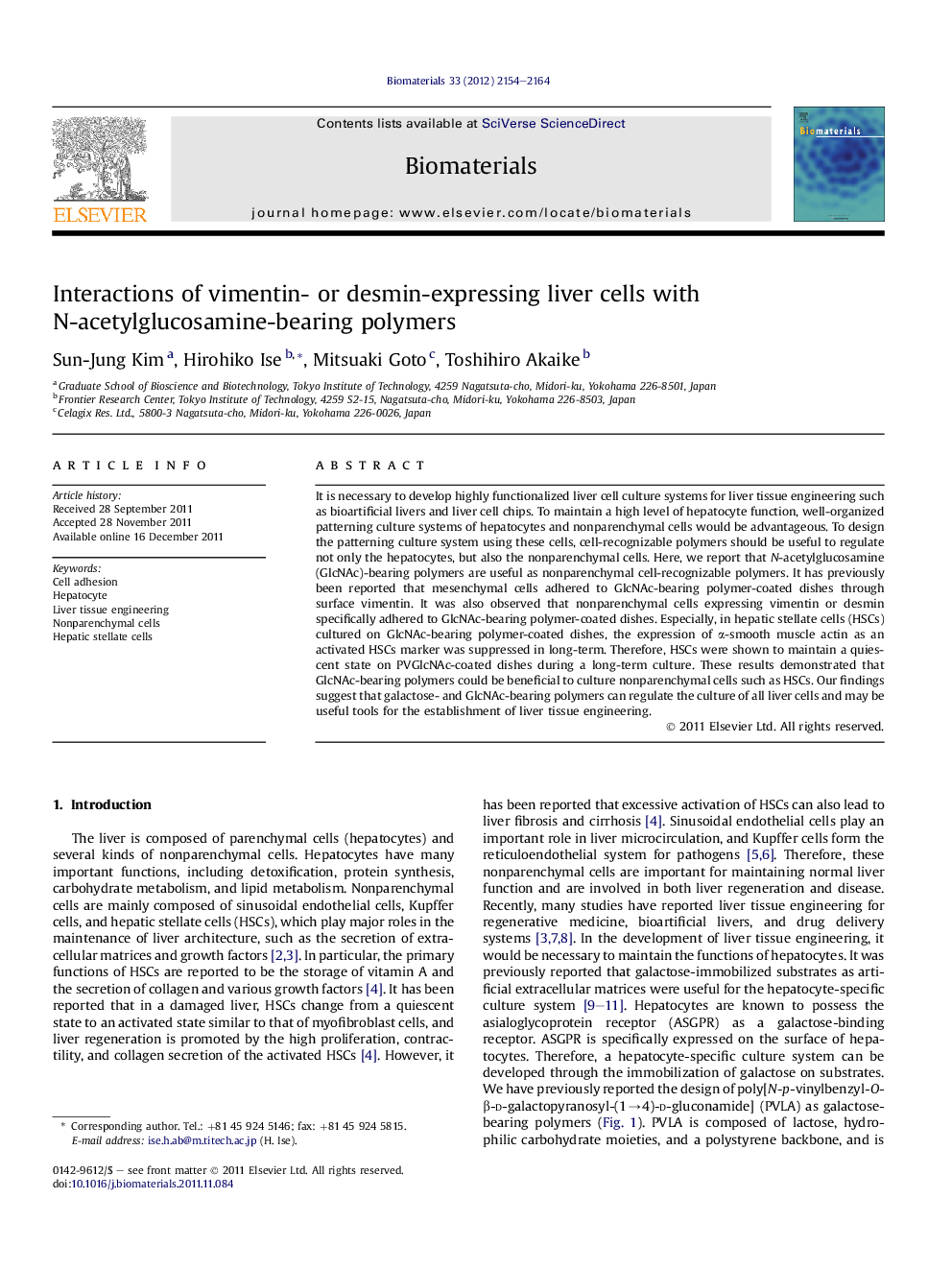| Article ID | Journal | Published Year | Pages | File Type |
|---|---|---|---|---|
| 7455 | Biomaterials | 2012 | 11 Pages |
It is necessary to develop highly functionalized liver cell culture systems for liver tissue engineering such as bioartificial livers and liver cell chips. To maintain a high level of hepatocyte function, well-organized patterning culture systems of hepatocytes and nonparenchymal cells would be advantageous. To design the patterning culture system using these cells, cell-recognizable polymers should be useful to regulate not only the hepatocytes, but also the nonparenchymal cells. Here, we report that N-acetylglucosamine (GlcNAc)-bearing polymers are useful as nonparenchymal cell-recognizable polymers. It has previously been reported that mesenchymal cells adhered to GlcNAc-bearing polymer-coated dishes through surface vimentin. It was also observed that nonparenchymal cells expressing vimentin or desmin specifically adhered to GlcNAc-bearing polymer-coated dishes. Especially, in hepatic stellate cells (HSCs) cultured on GlcNAc-bearing polymer-coated dishes, the expression of α-smooth muscle actin as an activated HSCs marker was suppressed in long-term. Therefore, HSCs were shown to maintain a quiescent state on PVGlcNAc-coated dishes during a long-term culture. These results demonstrated that GlcNAc-bearing polymers could be beneficial to culture nonparenchymal cells such as HSCs. Our findings suggest that galactose- and GlcNAc-bearing polymers can regulate the culture of all liver cells and may be useful tools for the establishment of liver tissue engineering.
